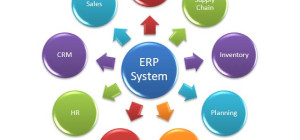The efficiency and success of your company are deeply intertwined with the productivity of your workforce. Every employee plays a vital role in steering the company towards its goals. Their collective efforts form the backbone of your organization. However, ensuring that this productivity is maintained and improved can be a challenging task, especially when your employees are spread across various locations, including remote work settings.
This is where the significance of employee monitoring software becomes apparent. In the ever-evolving landscape of the modern workplace, these software solutions offer an array of tools and capabilities designed to enhance productivity, maintain security, and streamline the monitoring process, whether your employees are working from the comfort of their homes or within the traditional office setting.
The beauty of employee monitoring software lies in its ability to simplify the often complex task of tracking employee activities. These tools operate seamlessly in the background, capturing a wealth of data that is essential for effective management. They are designed to monitor a variety of key details, including keystrokes, active and passive working hours, email communications, websites visited, and application usage. Some advanced features even include taking periodic screen captures and tracking file activities.
Understanding Employee Monitoring Software
Employee Monitoring Software is a robust tool designed to track and analyze employee activities, whether they work in the office or remotely. This software offers an array of features, including keystroke logging, active vs. passive time monitoring, email and website tracking, and even application usage monitoring. Advanced options encompass periodic screen captures and file activity tracking. Its primary objective is to provide valuable insights into employee productivity, identifying issues such as time theft and security breaches.
Types of Employee Monitoring
Employee monitoring takes various forms, each serving distinct purposes. Here are some of the most popular types:
Keystrokes Monitoring
Keystroke monitoring tracks the duration and frequency of data entry by employees. It aids in gauging productivity, recovering passwords, and identifying unauthorized system access.
Video Monitoring
Video monitoring, often implemented through cameras, is increasingly common in offices globally. It not only observes employees but also monitors customer behavior and enhances workplace security.
Email Monitoring
Email monitoring systems offer insights into incoming and outgoing emails, including sender and recipient details. It provides a window into departmental communications, aiding in identifying urgent issues.
Time Tracking Software
Time tracking software centralizes employee data, simplifying trend identification, performance evaluation, and attendance management. This tool is crucial for productivity optimization.
Field Employee GPS Tracking
For employees working in remote settings such as factories or construction sites, GPS tracking provides real-time location monitoring. It ensures employees are where they should be, enhancing efficiency and safety.
Is Online Employee Monitoring a Good Idea?
Online employee monitoring can be a double-edged sword. On one hand, it provides a clear view of employee activities, improving productivity and behavior control. On the other hand, it raises concerns about privacy and employer access to online activity. Striking the right balance is essential to reap the benefits while respecting privacy.
The Importance of Employee Monitoring
Employee monitoring is a crucial aspect of employee management. It enables prompt issue identification and resolution, fostering efficient work and meeting deadlines. By increasing productivity and motivation, it cultivates a positive work environment.
Pros of Employee Monitoring
Despite criticisms, employee monitoring offers several advantages for both employers and employees:
Increased Productivity
Knowing they are being monitored encourages employees to stay on task, resulting in higher productivity.
Improved Accountability
Employees are more likely to adhere to company policies, reducing errors and saving time and money.
Enhanced Security
Employee monitoring helps identify and prevent security breaches, from data access to asset protection.
Better Time Management
By tracking their activities, employees can identify areas where time is wasted and allocate it more effectively.
Compliance with Regulations
Many industries require strict data privacy compliance, and employee monitoring helps ensure these standards are met.
Cons of Employee Monitoring
However, employee monitoring has its downsides that need consideration:
Invasion of Privacy
It can be seen as an invasion of personal privacy, leading to discomfort and decreased trust.
Decreased Job Satisfaction
Feeling untrusted can decrease job satisfaction and potentially lead to high turnover.
Misuse of Information
Mishandling monitoring data can have detrimental consequences for both employees and the company.
Cost
Implementing and maintaining monitoring systems can be expensive, posing challenges for small businesses.
How to Select the Best Employee Monitoring Software
Selecting the right employee monitoring software is critical. Consider the following factors:
Ensuring Cost-Effectiveness
Affordability is paramount. The software should provide value without breaking the bank.
User-Friendly Interface
Choose software with a user-friendly and straightforward interface to avoid usability issues.
Harnessing Custom Reporting
Look for software that offers custom reporting, enabling you to extract the data you need.
Real-Time Data for Enhanced Productivity
Real-time data is invaluable for tracking and optimizing employee productivity.
The Role of Employee Monitoring in Security
Beyond productivity, employee monitoring plays a vital role in enhancing security. It identifies potential threats, ensuring the safety of your company’s data and assets.
Empowering Field Employee GPS Tracking
For businesses with remote employees, GPS tracking is a valuable tool for monitoring and enhancing field workforce performance.
Video Monitoring: Beyond Surveillance
Video monitoring not only ensures employee accountability but can also be used to improve customer experience and security.
Email Monitoring: Insights and Oversight
Email monitoring provides valuable insights into internal communications, helping you manage your team effectively.
Conclusion
Employee Monitoring Software is a powerful ally in the modern workplace when implemented correctly. It enhances productivity, security, and overall efficiency. However, it’s essential to strike a balance between monitoring and respecting employee privacy. The right software, with features tailored to your business needs, can lead to a more productive and secure work environment.
Frequently Asked Questions
Is employee monitoring legal?
Yes, employee monitoring is legal, but it must comply with relevant laws and regulations.
Can employee monitoring increase productivity?
Yes, employee monitoring can boost productivity by encouraging employees to stay on task.
How can I address employee concerns about privacy when implementing monitoring?
You can address privacy concerns by being transparent about the purpose and scope of monitoring and ensuring compliance with privacy laws.
What is the best way to balance monitoring and privacy in the workplace?
The key is transparency and open communication. Employees should be aware of the monitoring and its purpose.
Can employee monitoring software prevent security breaches?
Yes, employee monitoring software can help identify and prevent security breaches, safeguarding your company’s data and assets.
In conclusion, Employee Monitoring Software is a valuable tool when used appropriately, balancing productivity and security in the workplace.







